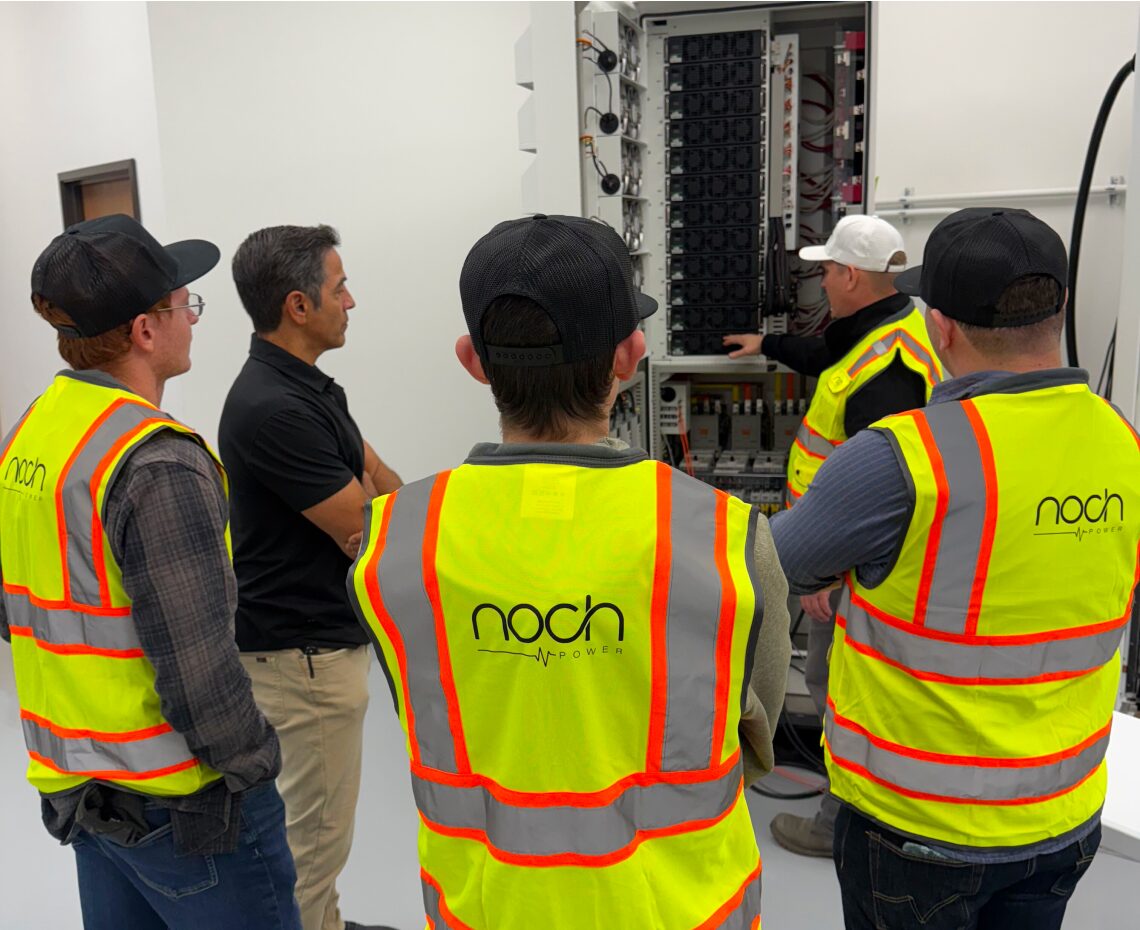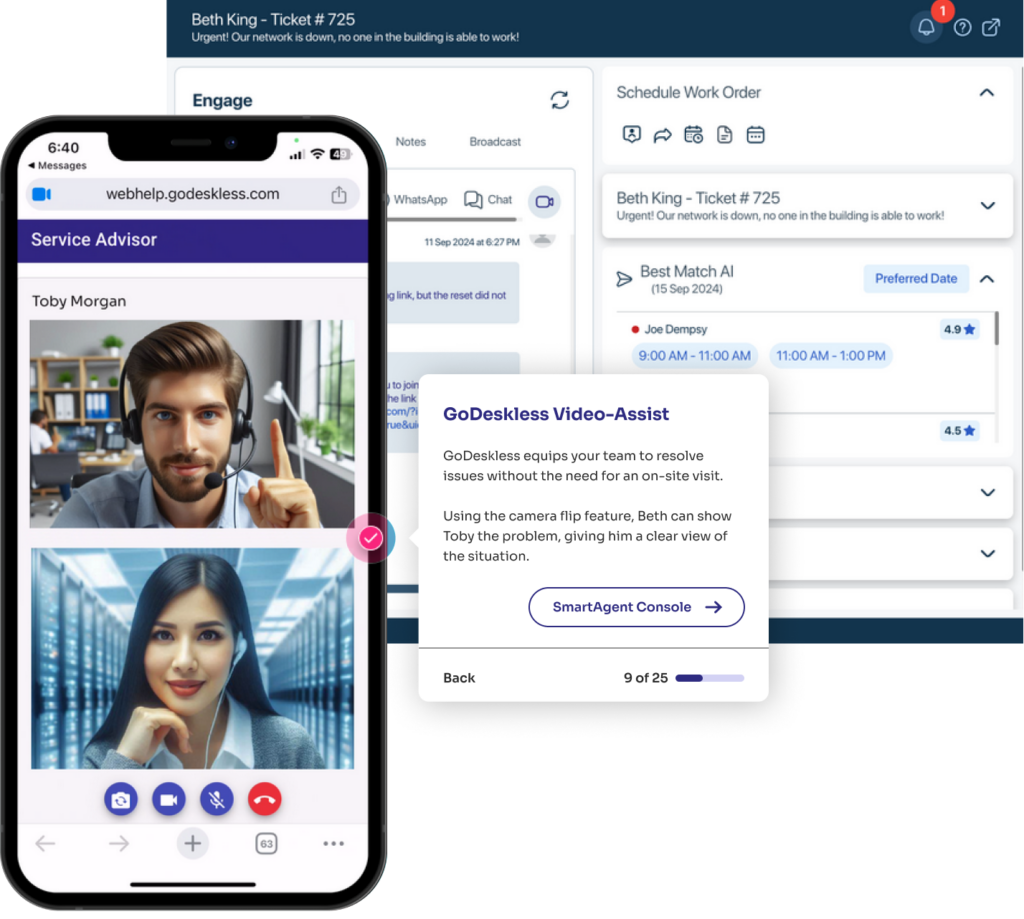In field service, where every visit counts, achieving high first time fix rates (FTFR) is a game-changer for both operational efficiency and customer satisfaction. A high FTFR means that field service technicians can complete a job on the first visit, avoiding the need for additional follow-ups. This is doubly important for industries with deskless workers, like utilities, healthcare, and manufacturing, where service delays can result in higher costs and customer dissatisfaction.
However, most companies know this. The challenge is maintaining a high FTFR. Field service workers often face issues like incomplete information, lack of the right tools, or communication barriers with headquarters. This is where field service optimization tools, such as real-time communication tools, instant messaging, and predictive analytics, come into play. Here, we’ll explore how these tools can streamline field service operations, improve FTFR, and ultimately reduce operational costs.
Understanding First Time Fix Rates and Their Impact
First time fix rates represent the percentage of service calls that are fully resolved on the initial visit. In field service management, achieving a high FTFR is a key performance metric that directly influences customer satisfaction, operational costs, and resource allocation. When technicians complete jobs on the first visit, they avoid costly follow-ups, save travel time, and improve productivity.
However, high FTFRs can be difficult to achieve due to several challenges:
- Incomplete Information – Field service technicians may lack access to detailed job information, equipment manuals, or real-time troubleshooting assistance, making it harder to resolve issues efficiently.
- Communication Barriers – Miscommunication between field technicians and office-based teams can delay decision-making and problem resolution.
- Resource Constraints – Without real-time visibility into inventory or access to necessary tools, technicians might not have what they need to complete the job on the first visit.
Addressing these challenges with field service optimization tools helps ensure that technicians are well-equipped to succeed on the first visit. By improving FTFR, organizations can enhance customer trust, reduce costs, and make more efficient use of their field service teams.
How Real-Time Communication Tools Improve First Time Fix Rates
One of the most effective ways to improve FTFR is through real-time communication tools that keep field service technicians connected to crucial information and support. Here’s how these tools make a difference:
- Instant Access to Information
Field service technicians often encounter complex issues that require access to detailed information or documentation. Mobile field service apps with real-time communication features allow technicians to pull up technical manuals, customer histories, or equipment specifications on demand. This empowers them to troubleshoot and resolve issues faster without waiting for office-based support. - Enhanced Collaboration with Experts
Through features like instant messaging and video support, field service workers can connect directly with experts back at headquarters or with colleagues in the field. When technicians encounter a challenging problem, they can initiate video calls or live chats with subject matter experts, who can guide them through the troubleshooting process in real time. This collaborative approach significantly increases the likelihood of a successful first time fix rate. - Seamless Updates to Clients
Real-time communication tools also improve the customer experience by keeping clients informed throughout the service process. Technicians can send updates, estimated times of arrival (ETAs), or explain what’s needed to complete the job. This proactive communication reduces customer anxiety and boosts satisfaction.
Overall, by streamlining communication, field service optimization tools ensure that technicians have the knowledge and support they need to solve issues on their first visit, ultimately improving FTFR.
Leveraging Predictive Analytics and Scheduling Optimization
Predictive analytics and scheduling optimization tools are critical components of modern field service automation. These tools enable companies to use data to better prepare technicians before they even arrive on-site, which can be a game-changer for FTFR.
- Data-Driven Insights for Proactive Preparation
Predictive analytics allows field service management to analyze historical data and anticipate potential issues. For example, analytics can reveal patterns in equipment failures, which enables companies to proactively schedule maintenance before problems escalate. By forecasting these needs, field service technicians can arrive prepared with the right tools and parts, greatly increasing the likelihood of a first time fix rate. - Optimized Scheduling and Routing
Field service optimization tools also enhance FTFR by ensuring that technicians are dispatched in the most efficient way. Advanced scheduling software can automatically assign tasks based on technician skills, proximity, and availability, clustering jobs in the same geographic area. This reduces travel time, minimizes downtime, and ensures that technicians can complete more jobs within their shift. - Proactive Inventory Management
Ensuring that the right parts and tools are available is essential for a high FTFR. Predictive analytics integrated with inventory management software allows organizations to monitor inventory levels in real time, making it easier to restock essential items before they’re needed. With proactive inventory tracking, field service workers are less likely to experience delays due to missing parts or equipment.
By leveraging predictive analytics and scheduling optimization, companies can ensure that field service technicians are well-prepared and equipped for each job, reducing the need for costly follow-ups and improving overall operational efficiency.
Streamlined Customer Interactions Through Field Service Optimization
Streamlined customer interactions are crucial to field service optimization. Customers expect transparency, timely updates, and quick resolutions—requirements that field service automation can fulfill. Mobile field service apps with real-time capabilities enable technicians to keep customers informed at each stage of service. By sharing real-time job updates, confirming arrival times, and providing status notifications, technicians create a more customer-centric experience that improves satisfaction and trust.
Field service automation tools also facilitate immediate feedback collection following a job, offering valuable insights into service quality and areas for improvement. This continuous feedback loop helps companies address recurring issues, refine processes, and ensure that their field service technicians are fully prepared to meet customer needs.
By combining tools for real-time communication, predictive analytics, and seamless customer interactions, organizations can significantly improve first time fix rates, enhance operational efficiency, and drive customer loyalty. For companies seeking a mobile-first solution, GoDeskless offers comprehensive field service optimization tools that empower deskless workers to excel in the field, streamline operations, and provide outstanding customer experiences. Learn how GoDeskless solutions can support your field service workers’ success and boost your field service operations.





